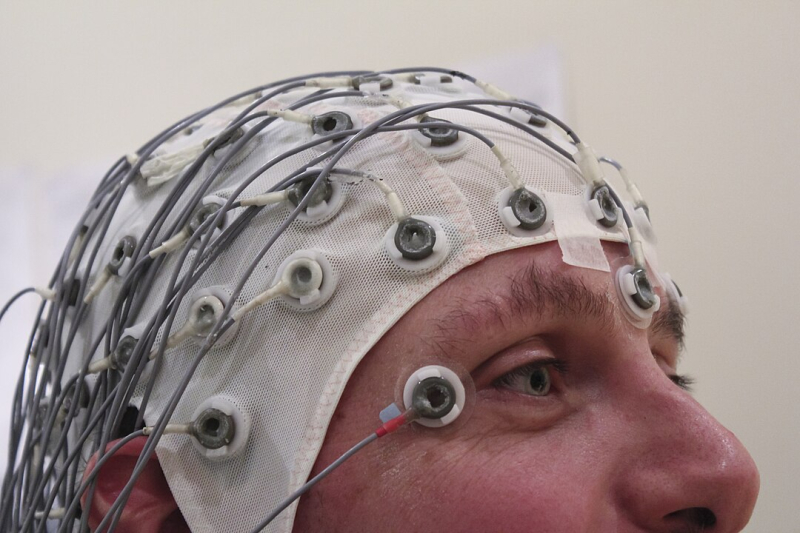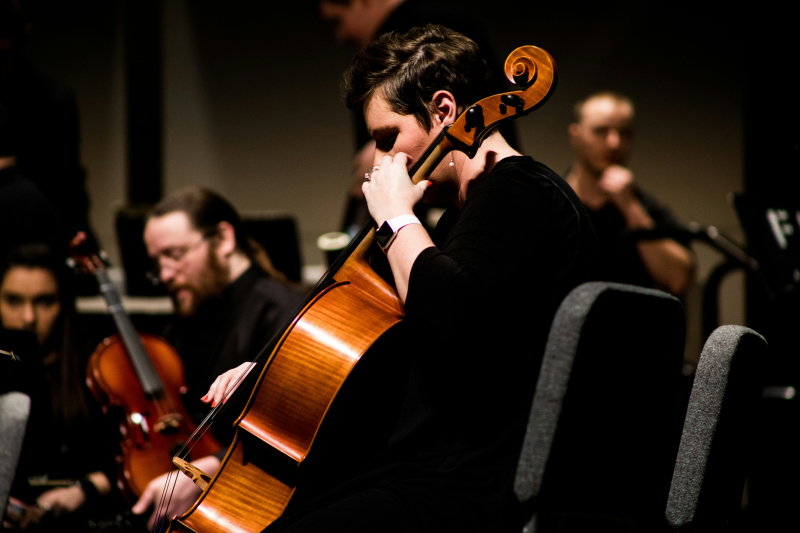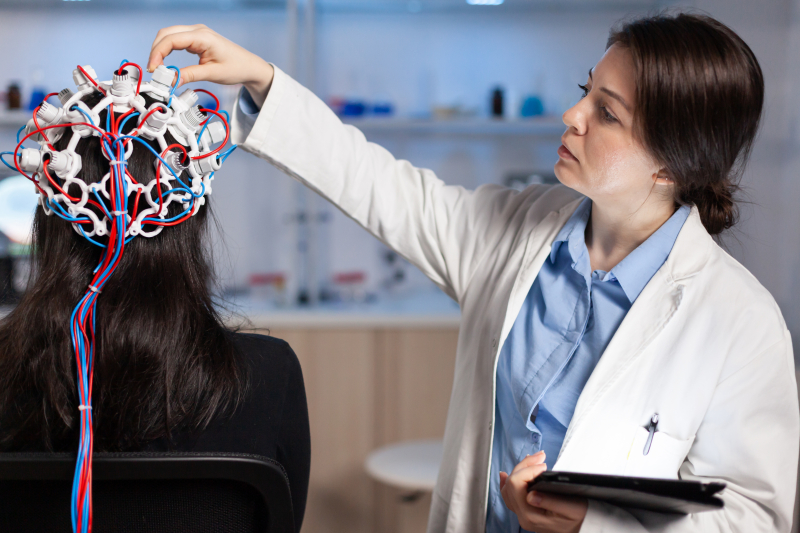Classic experimental designs
Many of the facts we know about the human brain and behavior were discovered in labs through a very specific form of experiments that were designed to minimize uncontrolled effects. Regardless of the chosen brain activity registration method, be it EEG (registering bioelectric brain activity), fMRI, or fNIRS (both of which register the fluctuations of oxygenated blood flow as a proxy for neuronal activity), these experiments would typically follow a specific structure.
Imagine that you decided to take part in one such “classic” study. After filling out all the necessary volunteer consent forms, you’d probably put on an EEG cap and be asked to sit in front of a computer, with a mouse or a controller in your hand. Then, you’d have to complete a number of tasks, like clicking a button when you see a specific image or word on the screen or hear a particular tone: each one instance is referred to as a “trial.” Though they can get very elaborate and creative, imitating all kinds of situations to answer questions about your attention, perception, or memory, they are still far from “natural” conditions (especially if we’re talking about fMRI, where you have to lie down in a tube surrounded by out-of-this-world noise).

EEG cap. Credit: Chris Hope / Wikimedia Commons / CC BY 2.0
Research beyond the lab
However, recent developments, such as portable EEG and fNIRS devices, as well as more advanced processing methods for easier separation of signal and noise, are taking research outside of the labs. Now, it’s possible to record the brain activity of students walking around campus, audiences listening to concerts in a hall, or, as we’ve written earlier, volunteers learning and performing the crafts of our prehistoric ancestors.
And this, of course, has made both the experiments and the discoveries even more interesting. But that’s not the only potential of these advances.
Two brains, synchronized
What if we could simultaneously record the brain activity of two people while they are performing a task together? Well, now we can! Called hyperscanning, this method involves capturing the activity of two or even more brains at once – and has been used to produce curious results in a whole range of different scenarios.
One earlier experiment involved pairs of pilots and copilots, who were monitored during a simulated flight. The results, demonstrating a denser network between two brains during takeoff and landing in comparison with other phases of the flight, opened up the path to a plethora of experiments in professional and other settings. There’s been a case study of a music therapy session, which explored the synchronization between a client, their parent, and therapist, multiple studies involving variants of the prisoner’s dilemma (a classic in psychology research), a survival video game, several studies of people chatting with each other – in one or two languages, experiments on joint creativity and teamwork, and even various VR setups.
A whole body of experiments has also been devoted to studying duos of musicians – pianists, guitarists, violinists, and more – performing together and instructed to improvise, lead and follow each other, or listen to each other perform.

Musicians. Credit: Kael Bloom on Unsplash
As for the findings, here are some curious ones:
-
In an experiment involving mothers and their infants, mothers were asked to react positively and negatively to different toys while playing with their children. It turned out that the emotion they showed did have an effect on brain connectivity: the brains were more “synchronized” when mothers reacted positively.
-
When Spanish native speakers who also speak English were asked to discuss several topics in both languages consecutively with each other, it turned out, perhaps unsurprisingly, that interbrain synchronization increases when talking in a native language compared to a learned one. However, the researchers noted some increase in synchronization during communication in the second language, too, which leads them to believe the answer is more complicated.
-
Another fun study involved pairs of romantic partners, friends, and strangers all tasked with drawing a specific picture on an Etch A Sketch as well as listening to each other share a troubling event. Predictably, perhaps, the researchers discovered that, during drawing (“motor coordination” in scientific terms) couples were more synchronized both in terms of behavior and neural activity compared to strangers. Surprisingly, however, the case was different in the second task (when they were sharing a troubling event): couples were highly synchronized on a behavioral level and less so on the neural one, while strangers displayed the opposite pattern. The paper’s authors hypothesize that this might be an evolutionary mechanism: with an established partner, we don’t need that many mental resources to try and predict their behavior or secure our bond, while with a stranger we need to be alert and on the lookout for patterns of a potential friend or foe.

Artist in a VR set. Credit: Biletto Editorial on Unsplash
Even more fascination is ahead
Neuroscience is a complex, multidimensional and constantly evolving field, and today we’ve only covered a little slice of its current research endeavors. Even these insights alone promise not only a new understanding of the way we cooperate, but potential insights into the way we’ve evolved, as well as science-based recommendations on improving all sorts of joint action scenarios, even in high-risk industries.
So, even as we hedge our bets on AI, we shouldn’t forget – there is still tons more to explore in “natural” intelligence – and many more incredible discoveries are yet to come!




